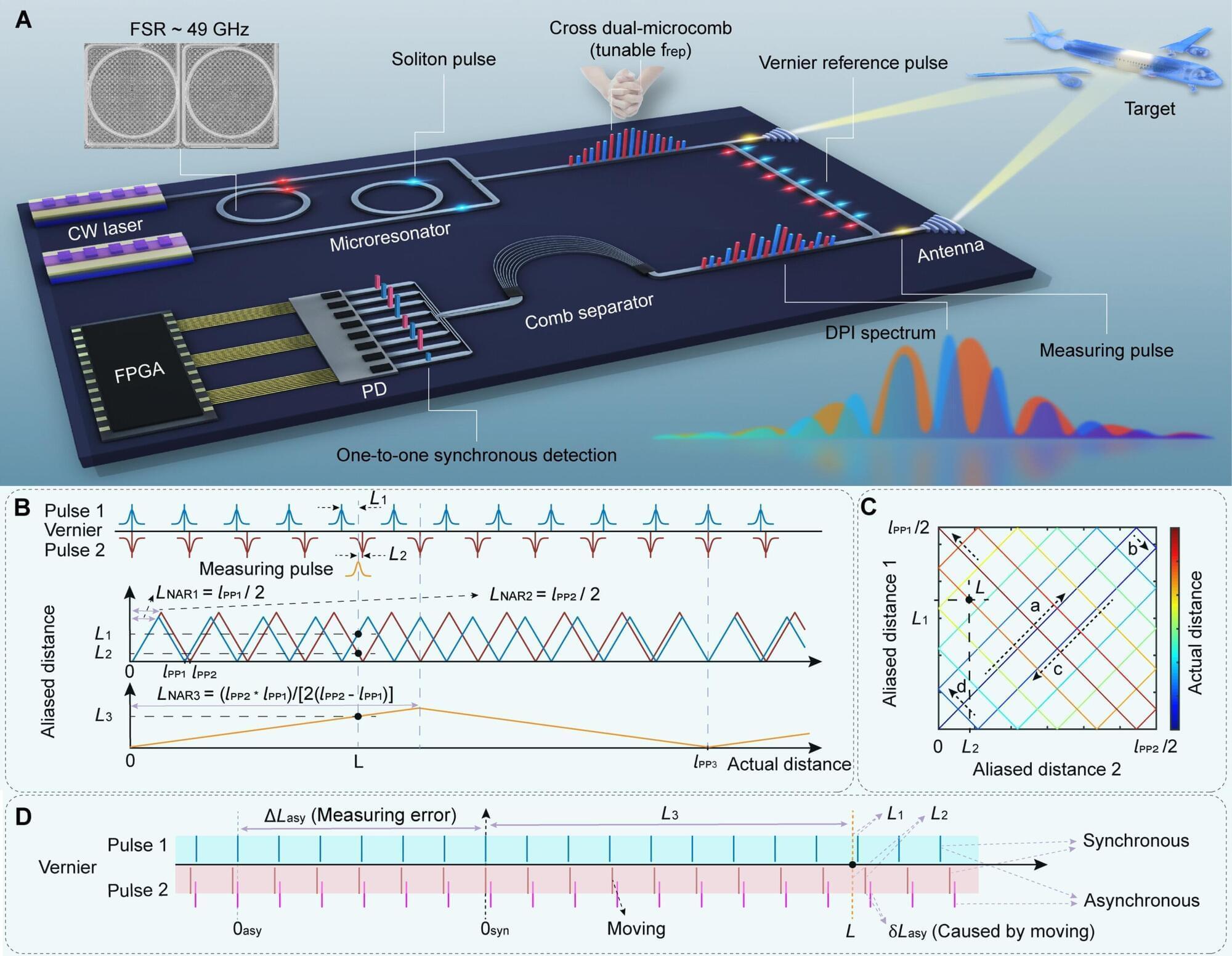Optical frequency combs, as a time and frequency “ruler,” have important applications in precision ranging. Conventional dual-comb ranging schemes utilize the optical Vernier effect to achieve long-distance measurements, and they typically require asynchronously secondary sampling, either after changing the repetition rates or swapping dual-comb roles.
These approaches have a commonly overlooked issue: When considering real-time distance variations induced by target motion or atmospheric turbulence in practical measurement scenarios, the asynchronously secondary sampling will introduce substantial absolute distance measurement error, namely asynchronous measurement error (AME).
In a study published in Science Advances, Prof. Zhang Wenfu’s team from the Xi’an Institute of Optics and Precision Mechanics (XIOPM) of the Chinese Academy of Sciences proposed an on-chip cross dual-microcomb (CDMC) ranging method based on dispersion interferometry. This method resolves the AME issue by eliminating secondary measurements through one-shot spectral sampling of cross dual-microcomb carrying distance information in the frequency domain.
